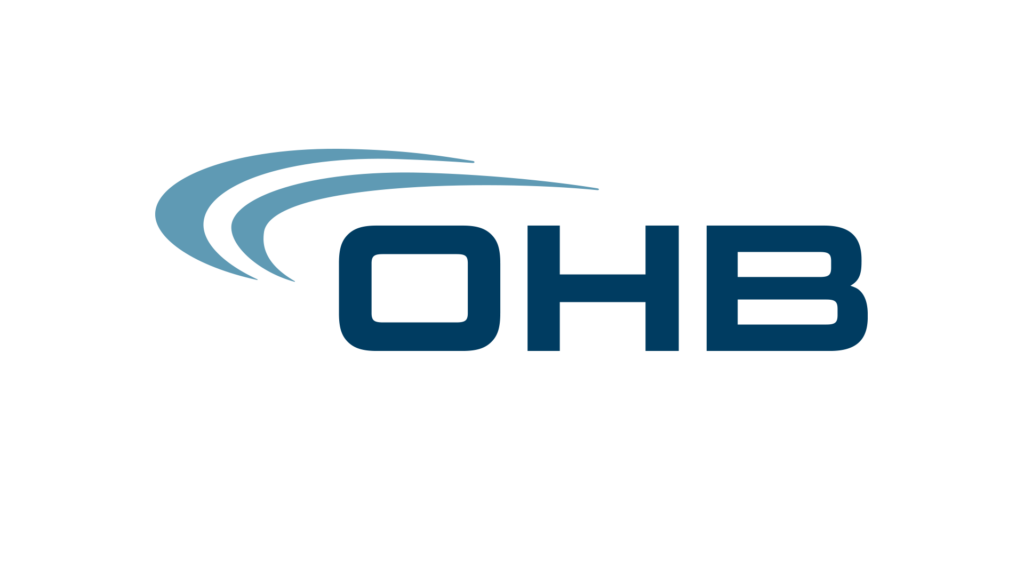Workplaces around the world are waking up to a powerful truth: inclusion and wellbeing are not just nice-to-haves—they are essential for thriving teams and business success. Yet, many organizations still struggle to turn good intentions into daily reality. What if the secret to progress lies in something as simple as shared experiences? In this guide, we'll explore how creating a more inclusive workplace: the role of social activities in employee wellbeing can transform culture, boost engagement, and help every employee feel like they truly belong.
Why Inclusion and Wellbeing Rise (or Fall) Together
From Psychological Safety to Reduced Bias: What the Data Shows
Research consistently highlights the deep connection between inclusion and employee wellbeing. When people feel included, they are more likely to experience psychological safety—the comfort to speak up, share ideas, and express their authentic selves without fear of negative consequences. According to Deloitte, inclusive workplaces are six times as likely to be innovative and twice as likely to meet or exceed financial goals compared to non-inclusive ones. For a deeper dive into the business case for wellbeing, see our Employee Well-Being Programs: A Practical Guide for Modern Workplaces.
A 2024 study in BMC Psychology found that inclusive leadership directly boosts workplace wellbeing by fostering vigor, or a sense of energy and engagement. Employees who feel valued and respected report higher job satisfaction, lower stress, and greater trust in their organizations. Conversely, exclusion breeds bias, increases stress, and can trigger a cycle of disengagement and turnover.
The Feedback Loop Between Belonging and Mental Health
Belonging is more than a buzzword—it's a basic human need. When employees feel like they belong, their mental health improves. This, in turn, encourages pro-social behaviors, reduces reliance on stereotypes, and helps break down barriers between groups. According to Gallup's State of the Global Workplace Report, organizations that prioritize social connection see higher employee engagement and retention.
Inclusive workplaces foster a strong sense of belonging among employees, helping them feel valued and connected to a larger community. This sense of belonging enhances social connectedness, which is a fundamental human need.
— Culture Plus Consulting
The relationship is circular: inclusion supports wellbeing, and when people feel well, they are more likely to contribute to an inclusive culture. This positive loop drives productivity, creativity, and retention.
Diagnosing Your Current Culture Before Planning Activities

Quick Pulse-Check Questions for Leaders and HR
Before diving into new social initiatives, it's crucial to understand where your organization stands. Leaders and HR teams can begin with these pulse-check questions:
- Do employees from all backgrounds feel comfortable participating in informal gatherings?
- Are there groups who consistently opt out of social events? If so, why?
- How often do employees report feeling isolated or left out?
- Are recognition and rewards distributed equitably across teams?
- Do employees have channels to provide feedback on inclusion and wellbeing?
Honest answers to these questions reveal hidden gaps and help target efforts where they're needed most.
Spotting Hidden Exclusion in Hybrid and Shift-Based Teams
Hybrid work and non-traditional schedules can create invisible barriers. For example, remote workers might miss out on spontaneous office conversations, while shift-based employees may never interact with colleagues from other time slots.
Signs of exclusion in these contexts include:
- Lower participation rates in company-wide events from remote or shift-based staff
- Feedback indicating some employees feel "out of the loop"
- Activities scheduled at times that consistently conflict with certain shifts or caregiving responsibilities
Recognizing these patterns is the first step toward designing activities that reach everyone.
Designing Social Activities That Celebrate Both Diversity and Unity
Principles: Voluntary, Varied, Values-Aligned
To support creating a more inclusive workplace: the role of social activities in employee wellbeing, activities must be:
- Voluntary: Participation should never feel forced. Employees are more likely to join when they know their choice is respected.
- Varied: Offer a mix of activities—some active, some relaxed, some in-person, some virtual. This ensures that everyone can find something that fits their interests and comfort levels.
- Values-Aligned: Activities should reflect the company's commitment to inclusion, belonging, and respect for all backgrounds.
These principles reduce the risk of "token" events and foster authentic connections.
Examples: Cultural Potlucks, Interest-Based Clubs, Virtual Game Jams
Inclusive social activities go beyond the typical happy hour. Here are some engaging options:
- Cultural Potlucks: Invite team members to share dishes from their heritage, creating space for storytelling and cultural appreciation. For more ideas, check out 10 Engaging Cultural Activities for Employees to Foster a Thriving Workplace.
- Interest-Based Clubs: Form groups around shared passions—reading, sports, art, or gardening—so employees connect over what they love. See also Activities With Colleagues: The Secret to Well-Being, Collaboration, and Productivity.
- Virtual Game Jams: Host online game nights or trivia sessions, making it easy for remote and in-office staff to participate equally. For inspiration on event formats, visit Workplace Social Events: Transforming Connections and Culture.
By ensuring that team-building activities cater to diverse interests and abilities, organizations demonstrate their commitment to inclusivity and equal opportunities for all team members.
— Leantime
A platform like Neroia can help teams effortlessly discover and organize these activities, tailoring recommendations to individual interests and schedules.
Making Every Event Accessible and Equitable
Timing, Location, and Sensory Considerations
Accessibility is non-negotiable for inclusivity. When planning events, consider:
- Timing: Rotate event times to accommodate different shifts, time zones, and caregiving needs.
- Location: Choose venues that are wheelchair-accessible and easy to reach via public transport.
- Sensory Needs: Offer quiet spaces, reduce background noise, and provide clear signage for those with sensory sensitivities.
For more on making events meaningful and accessible, see Meaningful Workplace Events.
Funding Guidelines: Stipends, Sliding-Scale Fees, Sponsorships
Financial barriers can exclude employees from participating. To ensure equity:
- Provide stipends or cover costs for events, especially for activities outside work hours or offsite.
- Use sliding-scale fees or sponsorships so cost never prevents someone from joining.
- Clearly communicate what's covered and how employees can request support confidentially.
| Consideration | Action Step | Example |
|---|---|---|
| Timing | Rotate event times | Alternate between AM/PM slots |
| Location | Ensure full physical accessibility | Ramp, elevator, accessible restrooms |
| Sensory Environment | Offer quiet zones, minimize loud music | Designated quiet area |
| Financial Barriers | Provide stipends or cover fees | Company-paid tickets, meals |
| Remote Inclusion | Always offer a virtual participation option | Livestream or hybrid format |
Empowering Employee Resource Groups (ERGs) to Lead the Charge
Co-Creation Over Top-Down Planning
Employee Resource Groups (ERGs) are powerful engines for change. Rather than dictating activities from the top, organizations should empower ERGs to co-create social experiences. This ensures events reflect real needs and foster a sense of ownership.
- Invite ERGs to propose, plan, and host social activities.
- Provide budgets, resources, and executive sponsorship to support their ideas.
- Encourage cross-ERG collaborations to build unity across different identities.
Involving diverse employees in program design ensures that initiatives are relevant and effective. Seeking input from underrepresented groups helps identify unique challenges and barriers.
— Culture Plus Consulting
Measuring Impact: Participation, Sentiment, Retention
To know if these efforts are working, track:
- Participation Rates: Who is attending events? Are all groups represented?
- Sentiment Surveys: How do employees feel before and after activities?
- Retention Data: Are employees who participate more likely to stay?
These metrics help ERGs and leaders iterate and improve over time.
Training Leaders to Facilitate, Not Dominate, Social Spaces

Inclusive Micro-Behaviours During Informal Gatherings
Leaders play a crucial role in setting the tone for inclusion. During social activities, effective leaders:
- Invite quieter voices into conversations without putting them on the spot.
- Use inclusive language and respect preferred names and pronouns.
- Model curiosity about different perspectives and experiences.
For example, a manager might ask, "Is there anyone we haven't heard from yet who'd like to share?" or "What can we do to make this activity more comfortable for everyone?"
Handling Conflict or Insensitive Remarks on the Spot
Even with the best intentions, conflicts or insensitive comments can arise. Leaders should be ready to:
- Acknowledge the comment or behavior calmly and directly.
- Reiterate the team's values around respect and inclusion.
- Offer support to anyone affected and, if needed, follow up privately.
If you do [use harmful language], apologize correctly and do the work to ensure you won't repeat the mistake.
— WorkTango
Proactive responses protect psychological safety and show that inclusion is a shared responsibility.
Tracking Wellbeing Gains After Social Initiatives Go Live
Metrics: Vigor Scores, Absenteeism, eNPS, Turnover Intent
To demonstrate the value of creating a more inclusive workplace: the role of social activities in employee wellbeing, organizations must measure outcomes. Key metrics include:
- Vigor Scores: Regular pulse surveys on energy, engagement, and enthusiasm.
- Absenteeism: Tracking sick days or unplanned absences before and after initiatives.
- Employee Net Promoter Score (eNPS): Asking, "How likely are you to recommend this workplace to others?"
- Turnover Intent: Monitoring changes in the number of employees considering leaving.
Tools for Continuous Measurement:
- Anonymous feedback forms after each event
- Quarterly wellbeing surveys
- Participation analytics from social benefit platforms like Neroia
For more on the importance of mental health at work, visit the World Health Organization: Mental health in the workplace.
Continuous Improvement: Iterate, Retire, or Scale Activities
Social initiatives are not set-and-forget. Use data and feedback to:
- Iterate: Adjust activities based on what works and what doesn't.
- Retire: Let go of events that no longer serve the team or have low engagement.
- Scale: Expand successful activities to more teams or locations.
By embracing open communication and actively listening to one another, organizations can foster a sense of unity and understanding within their teams.
— Leantime
Conclusion: The Ongoing Journey to Inclusion and Wellbeing
Creating a more inclusive workplace: the role of social activities in employee wellbeing is not a one-time project—it's an ongoing journey. By diagnosing current culture, designing accessible and meaningful activities, empowering ERGs, training leaders, and tracking outcomes, organizations can build a culture where every employee feels seen, valued, and energized.
Platforms like Neroia make it easy to foster authentic connections and measure the impact of your efforts, helping teams move beyond box-ticking to genuine belonging. When inclusion and wellbeing rise together, everyone wins—employees, leaders, and the organization as a whole.
Ready to take the next step toward a more vibrant, connected, and inclusive workplace? Start today, and watch your culture thrive.




